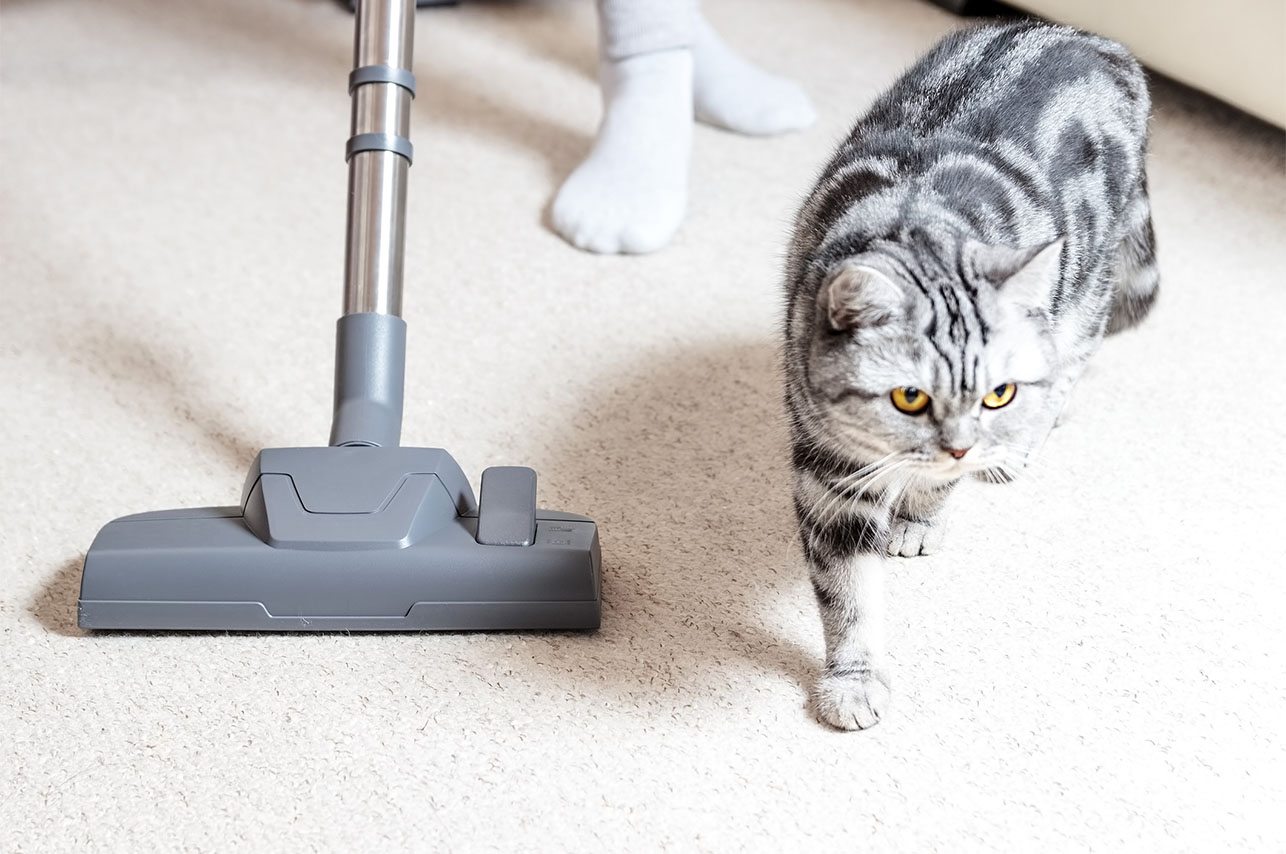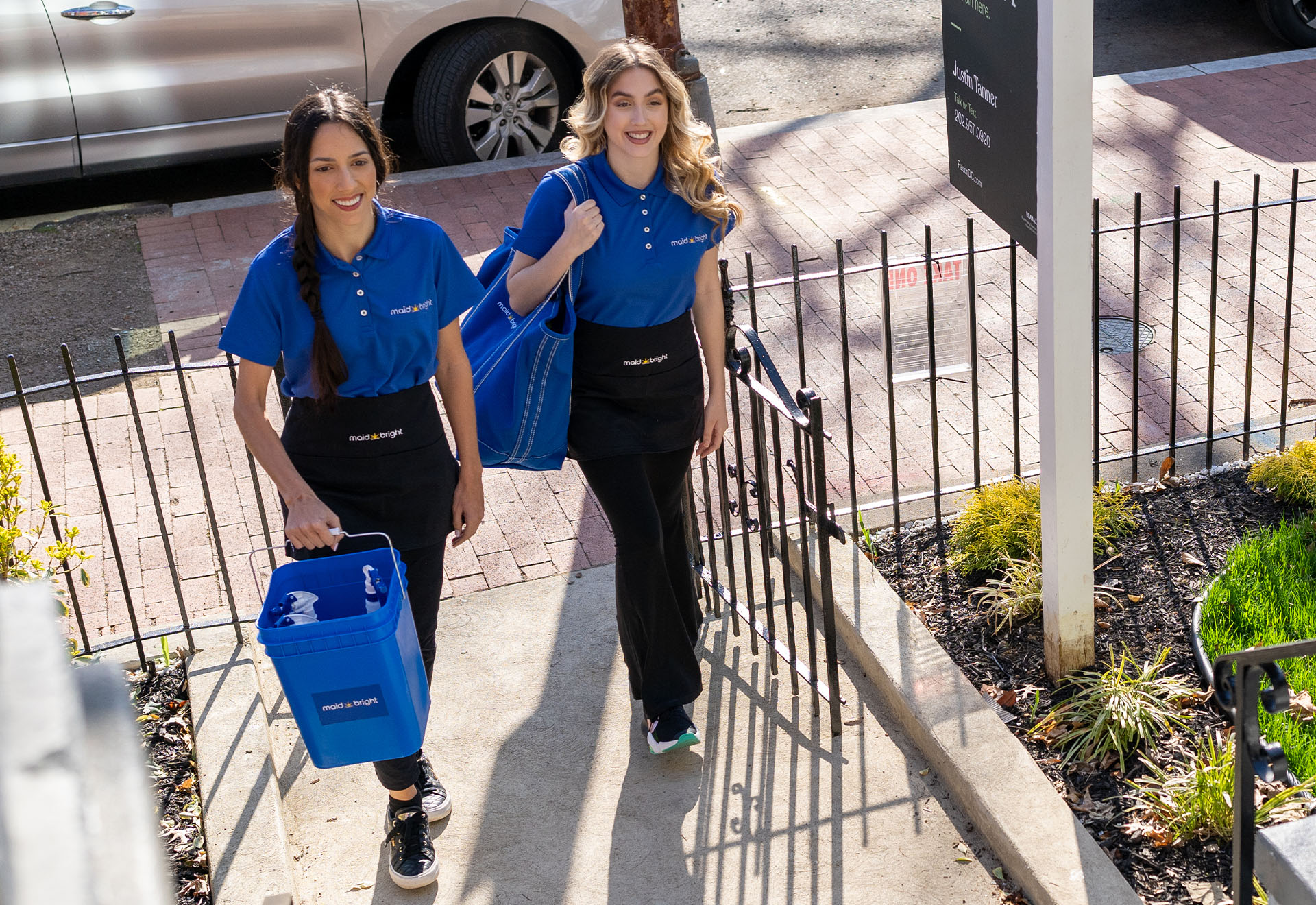July 05, 2023

Products Not to Use Around Pets
Products Not to Use Around Pets
Pet owners do everything in their power to keep their beloved furry friends safe and happy. One way to help ensure your pet’s safety is to prevent accidental exposure to toxic chemicals by keeping these substances away from them. This is often easier said than done, as many household cleaning products contain harmful ingredients to pets.
If your pet inhales or ingests toxic chemicals, they can experience mild to severe reactions. When you learn which ingredients to avoid, you can choose high-powered cleaning agents that are safe and effective.
Dangerous Ingredients
Some household cleaners contain toxic chemicals that are harmful to pets. Here are some of the dangerous ingredients common in cleaning products, along with their effects if your pet ingests them:
Acids: Acids are common in toilet bowl cleaners, pool sanitizers, and metal cleaners. They can cause diarrhea, vomiting, and abdominal pain. If its pH level is low, acid can cause burns to the stomach, esophagus, and mouth.
Solvents: Any substance that dissolves another substance is a solvent. Common solvents in cleaning chemicals are short-chain alcohols, including isopropyl alcohol, phenol compounds, d-limonene, pine oil, and glycol ethers. Solvents cause gastrointestinal upset. However, the reaction to solvents can be serious if your pet ingests a large quantity of glycol ethers or pine oil.
Bleach: Most household bleaches are 3%-5% sodium hypochlorite, so they only cause nasal irritation, vomiting, and diarrhea. Large quantities of concentrated hypochlorite, like what is found in a pool cleaner, can cause esophageal stricture and burns to the stomach, esophagus, and mouth.
Hydrogen peroxide: Household cleaners typically contain 3%-5% hydrogen peroxide if they are nonchlorine. At this concentration, ingestion may cause mild gastrointestinal irritation, vomiting, and gastrointestinal erosions, but only rarely. A concentration of 10% or higher can cause hemorrhagic gastritis, gas embolization, and burns to the mouth, stomach, and esophagus.
Percarbonates: Percarbonates, like sodium carbonate, are also common in nonchlorine bleach. This ingredient can cause esophageal strictures, as well as ulcers in the mouth, stomach, and esophagus.
Bases: Bases (alkalis) cause gastrointestinal distress in low concentrations. In higher concentrations, they can cause corrosive injury. One base to look out for is ammonia, which is common in multisurface cleaners, window cleaners, floor polishing waxes, bathroom cleaners, and drain cleaners.
Formaldehyde: Formaldehyde can cause skin, eye, nose, and throat irritation, as well as gastrointestinal tissue erosion. It’s common in air fresheners and cleaning products that contain terpenes.
Anionic and nonionic surfactants: Surfactants help reduce the tension of water so it can penetrate dirt and grime, making them common in cleaning products. They may cause mild gastrointestinal upset, skin and eye irritation, aspiration (rarely), and gastrointestinal tract injury (rarely). Anionic surfactants include dialkyl sulfosuccinate, alkylbenzene sulfonates, and alkyl aryl sulfonate. These surfactants are most common in kitchen cleaners and laundry detergents. Nonionic surfactants include PEG stearates, ethoxylated alcohols, and alkyl aryl polyether sulfates. They are common in toilet bowl cleaners and laundry detergents.
Cationic surfactants: This surfactant can cause severe reactions, especially in cats. Mild reactions include gastrointestinal distress and burns in the esophagus, stomach, and mouth. Severe reactions include hemorrhagic gastritis, central nervous system depression, aspiration, dermal burns, and acute lung injury. Cationic surfactants include benzalkonium chloride and cetrimonium bromide. You can find them in fabric softeners, potpourri oils, sanitizers, and antiseptics.
Chelants: Chelants are in cleaning products for hard water, like hard water dishwasher detergents. Common chelants include citrates, ethylenediamine tetraacetic acid, and silicates. They can cause gastrointestinal upset.
Vinegar: Vinegar can cause diarrhea, vomiting, oral irritation, and oral pain. Since it can penetrate dirt and grime, there are a few natural, vinegar-based cleaning products.
How Pets Can Be Exposed To Chemicals
Pets can come into contact with toxic chemicals in four ways:
Ingestion: This is when your pet licks, swallows, or chews the product. Your pet could also get the product on a part of their body, like their paw, and lick it off.
Inhalation: Certain scents can cause respiratory distress if your pets breathe them in.
Direct contact: Pets can absorb the product through their skin.
Secondary ingestion: Secondary ingestion occurs when your pet eats something else that came into contact with the product, such as a mouse.
Tips to Keep Your Pets Safe
Now that you know what ingredients to watch out for in your cleaners and the different exposure types, here are some tips to keep your pets safe:
Bleach: Always dilute bleach, and rinse and air anything you clean with it.
Carpet freshener: Keep your pet out of the room until you vacuum the powder after using carpet freshener.
Carpet shampoo: If you use carpet shampoo, ensure the room is dry before letting pets in.
Essential oils: Cats are sensitive to essential oils, so ensure you use an oil approved by your veterinarian or prevent your pet from accessing the area without supervision.
Fabric softener sheets: Keep fabric softener sheets away from your pets, so they can’t ingest them.
Scented litter: Scented litter is safe for healthy cats, but cats with existing respiratory issues may be sensitive to the fragrance.
Product labels: Always check the safety warnings on your products. If the product is toxic for humans, it’s likely toxic for pets.
Natural products: Natural products aren’t always safe. Consult with a veterinarian or trusted source to confirm whether a product is safe for pets.
Pet-safe products: You can shop for products listed as “pet-safe.” Still, consult a trusted source or veterinarian to confirm the product is safe before using it.
Storing household cleaners: Store products in cupboards and cabinets that your pets can’t access. Secure these cupboards and cabinets with a lock or child safety lock.
Original containers: Keep your products in their original containers so you can reference the label.
Pet areas: Avoid using products near your pet’s food and water bowls and where they sleep or rest.
Scented products and odor removers: These products contain phthalates or other potentially dangerous chemical components, so avoid using them around your pet.
Wet areas: When cleaning, keep your pets out of the room until it’s clean and any wet areas are dry.
Supervision: Supervise your pet in areas where there are chemicals, such as the garage. Also, ensure you never leave your cleaning supplies out.
Ventilation: Ensure the area you’re cleaning is well-ventilated.
Keep Your Pets Safe With Maid Bright Cleaning Services
Pets are adorable and loveable, but they can also create messes in your home. When you have a busy life, cleaning can fall through the cracks. You can trust Maid Bright to clean your home and protect your pets from dangerous chemicals.
Maid Bright is a leading, award-winning cleaning company servicing Maryland, Washington, D.C., and Virginia. The eco-friendly products we use are safe for everyone, including pets. We are licensed and insured and offer free in-home estimates. Our dependable, friendly, and professional team can guarantee your satisfaction. Schedule a free estimate or book our cleaning services today.
Count on Maid Bright for Your Professional Cleaning
At Maid Bright, we understand the value of having an organized and stress-free space. We offer professional home cleaning services that are customized to your needs. Contact us to schedule an appointment today!
Share on Social

Book Your First Cleaning
We have high standards for your home.
